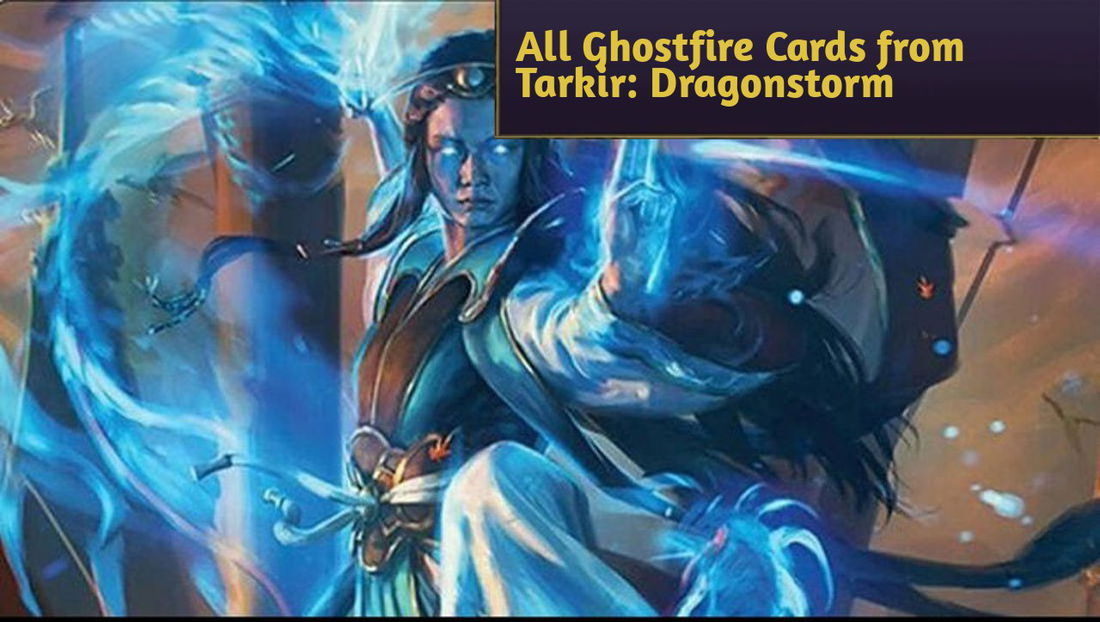Wizards of the Coast announced on Monday afternoon (31) the update of banned and restricted cards for Magic: The Gathering, with changes for the game's eternal formats, Modern, Legacy and Pauper. The announcement also removes two cards from the Pauper format from the banned list.
Modern - Underworld Breach is banned

Tierliste
Kein Rang
Bewerten Sie es selbst
*Diese Website enthält Affiliate-Links, für die wir möglicherweise eine Vergütung erhalten
To echo a point from the opening of the article, December's update to the Modern banned list did a lot to breathe new life into the format. We've seen Mox Opal, Green Sun's Zenith, and Faithless Looting show up in a bunch of decks, to varying degrees of satisfaction from the team here at Wizards. Green Sun's Zenith showing up in Yawgmoth and Amulet Titan combo decks was something we anticipated and were happy with. Faithless Looting breathing new life into proactive graveyard-centric decks like Hollow One is also great. However, Mox Opal teaming up with Underworld Breach to create an explosive and resilient combo deck is not something we're happy with.
Ad
To give a bit more context, the last couple of months has seen a ton of experimentation with different ways to play with new tools in the format, but over time, it has become increasingly apparent that the strongest thing to do in Modern is play a Temur Grinding Breach combo deck. The deck uses the combination of Underworld Breach and Grinding Station in conjunction with a zero-mana artifact to mill its library three cards at a time before winning with a card like Thassa's Oracle or Grapeshot. The deck is notoriously resistant to graveyard and artifact hate by virtue of its ability to diversify its threats, which made it uniquely difficult to overcome in sideboarding. Between that resiliency and its explosiveness—with it being able to win as early as the first turn—we're confident that it's time to send Breach back to the underworld.
With the amount of pressure that Underworld Breach put on the format, we expect the format to change a good bit with its departure, especially sideboards. Previously, we saw players committing well over half of their sideboard to try and suppress the combo, but now we're optimistic that the format can open up a bit and allow for a wider range of strategies to exist. Looking past Temur Grinding Breach, Modern looks pretty good.
A bunch of different decks are showing up, with Orzhov Blink making a name for itself over the last few weeks. Aetherdrift has made a major impact to the format, with Ketramose, the New Dawn making its way into the aforementioned Blink decks, Marauding Mako showing up in Hollow One decks, and Stock Up showing up in blue decks that are looking to play a longer game.
We're planning on keeping an eye on the decks that were strong enough to hang despite Temur Grinding Breach's prevalence: Boros Energy decks and Dimir Oculus decks, as well as Eldrazi variants, Amulet Titan, and the Orzhov Blink deck. We're watching Red-White Energy variants the closest to see if reasonable counterplay emerges in the coming Regional Championship Qualifier season, and we're excited to see what players cook up.
Legacy - Troll of Khazad-dûm and Sowing Mycospawn are banned

Troll of Khazad-dûm has been a big part of Legacy for almost two years now, with some form of Dimir Reanimator being the strongest deck in the format since approximately the release of The Lord of the Rings: Tales of Middle-earth™. It has an extremely unique impact on deck building, allowing players to fill their deck with cards like Reanimate and Animate Dead without having to play a bunch of big creatures that might otherwise be dead cards in their hand or playing as many discard cards as possible to get big creatures into their graveyard. This subversion of opportunity costs has meant that Reanimator has been exceptional at playing a fair game while threatening an intensely unfair game for the better part of two years now. We believe that the Reanimator strategy is a core part of what makes Legacy feel like Legacy and is fun to have in the format. We've learned that the deck is more fun and less frustrating to play against when it must be a more committal synergy deck that isn't afforded the luxury of straddling the line between a tempo-y aggro deck and a combo deck. For that reason, Troll of Khazad-dûm is banned.
Ad
On the other side of format speed, Eldrazi and other colorless strategies have been prevalent in Legacy since they got a boost from Modern Horizons 3 last summer. Generally speaking, these decks have presented the issue of completely sidestepping the rules of engagement in the format, making them extremely hard to interact with. Last December, the strongest version of this strategy was using Vexing Bauble as insulation against cheap spell interaction for a fast combo, but now, colorless strategies have positioned themselves to have the best inevitability in the format, with a good chunk of that inevitability coming from a single card.

Sowing Mycospawn does it all in the context of colorless Eldrazi; it can grab late-game cards like Eye of Ugin and some interactive lands like Blast Zone or Karakas, but most frequently, it is grabbing copies of Wasteland to exacerbate the strength of its land-exiling effect. That land-exiling effect can notably target basic lands, which is a class of card that is more fun when it's a reliable out to other land-hating cards in the format like Wasteland and Blood Moon. Sowing Mycospawn is so good at attacking lands, often two at a time and even hitting basic lands, that it has caused environmental pressures on the format, compressing games to the first handful of turns and putting the Magic play experience at risk. For these environmental reasons, as well as the violation of format heuristics, Sowing Mycospawn is banned.
In the coming weeks, we'll be keeping an eye on the prevalence and win rates of the various all-in combo and fast-mana decks that bubbled to the surface of Legacy. Blood Moon Stompy and Oops! All Spells are prime examples of decks that have seen their meta share rise in the past few months with the density of modal double-faced land cards in Modern Horizons 3, both currently within bounds of play rates and win rates that have been historically acceptable. Ideally, the above changes will create space for more counterplay against these decks over time.
Pauper - Basking Broodscale, Deadly Dispute, Kuldotha Rebirth are banned
Overall, the format is varied. There are tons of decks you can play, with many of them hovering between 48% and 53% win rates. The win-rate gaps in the format are small, and there's a ton of ability to play what you want and innovate.
However, there's more than just the numbers. While things can be balanced, that doesn't mean that the play patterns are the most fun, or the same packages aren't showing up across tons of decks and making things feel homogenous, or that the polarity of certain matchups is ideal.
To do this, we looked at a lot of Magic Online data (you will see us reference some win percentages below), tabletop tournament results, and conducted our own testing. While no one tournament or event makes or breaks our decision-making process, we look across them all in aggregate. I'll also mention that we finalized these decisions before the recent Paupergeddon event, though we saw nothing from that event that caused us to change course on any decisions.
Ad
Today's changes are meant to address these issues and, in general, slow the format down slightly while addressing some play-pattern notes. Our hope is this will bring some old decks back, remove a frustrating combo deck, and create a whole new archetype.

When Modern Horizons 3 released last year, with it came Basking Broodscale. This created an unexpected new combo deck: by putting Sadistic Glee on a creature while controlling a Broodscale, whenever a creature dies, it puts a counter on the Broodscale. This then triggers the Broodscale, creating a token you can sacrifice to gain mana. This triggers again and creates a loop that results in boundless colorless mana and a creature that kills in one hit. Factor in that the Broodscale itself can adapt to start the engine, and this becomes a two-card combo that can kill early in the game—and is still just as lethal later in the game.
When a new deck shows up, we often want to give it time to watch the format build and react to it. Sometimes, decks will show up and be very strong, then the metagame will evolve, adapt, and it will just become a part of the metagame puzzle. Other times, a new deck will appear weak but gain strength over time as people begin to converge on a build and add resiliency to it. Usually, it's worth waiting a little bit to see how things evolve and change.
In the case of the Glee Combo deck, when it showed up with the release of Modern Horizons 3, it was far from its most powerful incarnation. But with time, the deck has become tighter and more refined. The metagame has adapted around it, with the deck boasting about a 53.5% win percentage right now, which is good but otherwise acceptable. However, its impact on the metagame remains huge. Everybody must be able to deal with a fast Glee Combo, and cards like Snuff Out and discard spells have risen in value to make sure there are counter-measures. New decks have even arisen in part because they're strong against Glee, like Jund Wildfire. The pressure this combo has exerted and continues to exert on the format is immense.
Additionally, it's just not that fun to lose to. A lot of decks are invalidated because they have trouble answering an early combo, and as people come into the format, it's a huge barrier to run into. It really restricts the amount of viable decks. We were close to doing it during the last banned and restricted window but elected to wait to see things evolve a little further, and it's only become clearer that it needs to go.
Why Broodscale over Glee for the combo piece? Glee has existed for 27 years without causing any combo problems. It's also far more likely we print something more like a Sadistic Glee in the future that causes this combo to happen again—you can very easily imagine another common that does this—than it is we make something that creates a token with a sacrifice ability when a counter is placed on it. And so, Broodscale goes.

Broodscale may be the combo piece in a deck of much discussion, but there has been another card a little more subtly hanging over Pauper.
Ad
Over the past year, we've seen a lot of decks converge on the Deadly Dispute and Ichor Wellspring draw engine. When it comes to card advantage and raw material in Pauper, this cavalcade of draw-two cards is unmatched. Many top decks in the format, ranging from Affinity, Glee, and Wildfire to Pactdoll and Gardens, all play four copies of Dispute and four copies of Wellspring. Most other card-draw options have been pushed out, and it's a considerable reason to play black. Any time you begin to look at Top 6-plus decks within many different archetypes and they're all playing the same eight core cards, it's cause for a bit of concern. (For example, this decision was made and the article mostly written just before Paupergeddon a couple weekends ago, but that Top 8 featured seven decks with 4 Deadly Disputes!) It can begin to homogenize the format.
We looked into banning Dispute, Ichor Wellspring, and other draw-two cards (like Eviscerator's Insight) and Ichor Wellspring replacements, like Mephitic Draught. How were we going to break this up with this many redundant pieces? Should we just live with it? Ban tons of cards?
We wanted to act on this but also wanted community opinions. I asked about this a couple months ago in a recent video around the time of the last banned and restricted announcement, and over the past few months, many Pauper fans and pundits have also taken the side that yes, action should be taken.
While there is substantial redundancy, after a lot of playing and analysis, it became clear Deadly Dispute was just a huge cut ahead of the others. While it certainly looks similar in structure, the treasure does everything from making the card cost functionally one mana to accelerating you to your bigger threats, fixing your colors, and providing an extra artifact for Affinity decks. This is a large advantage over the comparable ones.
There is still a lot of redundancy, and we want to be clear that we don't expect this to cut out the engine entirely—we would need to ban Wellspring and maybe Draught to do that. I would still expect to see people playing Wellspring alongside Eviscerator's Insight, Reckoner's Bargain, and others. But losing Dispute is a meaningful enough ding that we expected it will weaken these decks and reduce players defaulting to black and the Dispute plus Wellspring package. We'll certainly be keeping our eye on how this plays out.

In the past, we've talked some about format polarity and speed. The format has sped up considerably in the past few years, and the cheap tools available at common have become stronger and stronger. Nowhere is this more apparent than in Mono-Red.
Mono-Red serves a very important role in the format, helping keep things honest so incredibly slow decks don't dominate. But by the same mark, it's always a careful balance to make sure it isn't creating too much of that pressure and warping too much of the format around the ability to deal with it. It is the most played deck in Magic Online Leagues, so it's everywhere.
Ad
Looking at the deck now, we see very similar data to the time around when we banned Monastery Swiftspear. While the deck is winning around 53% of its matches—totally within bounds—its Game 1 win rate is outrageous. Against Terror, Glee, Wildfire, and Red-Green Ramp, it boasts a whopping 65% to 70% Game 1 win rate, and against many other decks, it hovers in the 55% to 60% range. There is not a single deck among the most-played decks that it has a bad Game 1 matchup against—you have to dig down to decks like Dredge and Elves (about 2% of the metagame each) before you start finding matchups where it's disadvantaged in the first game.
Now, after sideboarding the story changes against several of these decks, most of those matchups flip unfavorably. But that kind of polarity is far, far higher than what we'd like to see.
This kind of polarity can be really damaging. If most decks have to sideboard a lot of cards for a single popular deck to beat it, it reduces how many slots you have for other decks in the format. It puts a lot of pressure on sideboard cards and how many you draw, which reduces your agency. Ideally, red would be a little weaker and people would feel like they need to sideboard against it a little less, which creates more of a natural situation where it's less about pre- or post-sideboard games.
What happened here? Part of it could be how the format has evolved to where it is now, and people have had to adapt more for Glee with cards like Snuff Out. Some of it could just be the tools that have slowly and incrementally improved red, like Goblin Tomb Raider, Reckless Lackey, and Clockwork Percussionist. But in any case, this deck is at an unacceptable position and even once the metagame adapts to account for the above two bans, it's likely that polarity will remain roughly true.
We talked about several cards to hit. We could hit a newer card like the Tomb Raider, which provides de facto Goblin Guide. But ultimately, though it has been part of the format for a long time, Kuldotha Rebirth is the card that often creates the most polarizing games and makes it tough to stabilize. You can deal with all the threats on the board and still easily die to Rebirth alongside Goblin Bushwhacker out of hand. Turn three, attack for minimum 8 damage using those two cards—plus whatever else you already cast—just really seals the deal … and even if you mount an early defense, that conjunction can put the game out of reach.
We'd love to see more control enter the environment, and the long-game reach of this card is one more tough thing to contend with. Of the two, between Bushwhacker and Rebirth, we'd rather hit the one that also gives you value out of cards like Experimental Synthesizer and Clockwork Percussionist.
Our hope is that this will help bring red back to a level where it's not as polarizing. It's something we will continue to watch to make sure this didn't hit red too hard—as mentioned before, it is a careful balance—but we expect red should remain playable with these changes and the format's evolution.
Ad
Pauper - High Tide and Prophetic Prism are unbanned
We want to try something new as an experiment. No other format has really tried this, and we think Pauper is a great place to experiment. You should not expect to see this in any other formats, and it's something the PFP is specifically interested in and thinks Pauper can handle given the accessibility of building decks and the predominance of online play.
There are some cards that have been banned in Pauper but are beloved by many. The format has evolved a lot in recent years, and it's not clear they all deserve to stay on the banned list. Trial unbans provide a way to try them out.
It works like this: a trial unban involves unbanning the card with the expectation that, before the next banned and restricted announcement, we will reevaluate if the card should remain unbanned. We'll share our expectations of what we are hoping happens with that card and compare that to the reality.
Not every unban in the future will necessarily be a trial unban, but it's a great tool in our toolbox. This is something new, so let us know what you think.
Now, let's talk about the two cards in question

This is the big one. High Tide has a very unique Pauper history.
High Tide's legality has always been a subject of dispute. Back before the tabletop and online formats were unified, and tabletop used printed legality and online used online legality with sets like Vintage Masters, High Tide was only legal in tabletop. It was a common in Fallen Empires but had only ever been in Magic Online at higher rarities.
There wasn't much history of High Tide being strong in tabletop Pauper—but there simply just weren't that many events to prove it out. And when the unification happened, High Tide was put on the banned list as a precaution. It certainly looked dangerous.
We want to try it for a few reasons.
For one, plenty of people wish spell-based combo could be more viable. While we think it's unhealthy if spell-based combo is the best thing you can do, it is a staple of Eternal formats and is helpful if represented. It can also prey on decks that just want to go super long. While Broodscale wasn't the right combo to leave legal, some combo is good and healthy.
Second, there are missing pieces and answers. Pauper has banned some of the strongest pieces: Cloud of Faeries, Peregrine Drake, and Frantic Search, for example. (Though Snap is still legal!) The format has sped up a lot. There are eight various red Blasts you can play and so on.
And third, it's a fan favorite! It formerly enabled a Legacy deck and has been something memorable. We've held back on unbanning it for a long time because of how dangerous it can be to bring back. But in the interests of expanding the format and giving people something they enjoy, we wanted to give it a try.
We on the Pauper Format Panel spent a lot of time building up High Tide lists and talking about it. Our lists seemed reasonable and weren't overly strong—with that said, we also recognize that thousands of players will quickly reach much stronger lists than the seven of us. So that's why we want to start with a trial unban here.
Ad
Our hope is that the deck ends up, at best, an option in the metagame beneath the very best decks. If it ends up not being played after some experimentation, that's a fine outcome. If it ends up fringe or playable but not in the best decks, that's the ideal outcome. These scenarios will leave it unbanned.
If it breaks through and enables one of the three most successful decks in the metagame, however, we will likely ban High Tide again at the end of the trial—having a kill-from-hand combo deck as one of the best three decks can be frustrating. Not every color can interact with that stretch super well.
The next banned and restricted announcement is June 30, and you can expect to hear from us about High Tide's fate then.
In the unlikely but plausible scenario, given the combo history of High Tide, that the format becomes completely dominated by High Tide to the point where very little else is playable, we may step in earlier to act. But it would have to be wildly extreme for that to happen, especially since it's important to give it time to see how the format evolves.
I'm really excited to see what you all do with the card, and we'll be monitoring closely!

Prophetic Prism is a much different story than High Tide. This was a more recent ban, and one we had a hand in. At the time, Tron was dominating, and Affinity was using this to fix its mana.
It's a narrow ledge you walk with both these decks, and we on the PFP have debated returning Prism for a long time. But times have changed dramatically, and now we'd be happy seeing Tron show up a bit more!
However, there was always a reasonable concern it could go right back to causing the same problems it was just a few years ago. The printing of Energy Refractor has given us a lot of confidence that Prism would be fine, though it is still certainly a lot more playable in a deck like Affinity than Refractor.
However, while Prism is not a card that is generally intrinsically too powerful, it can create a lot of homogeneity and cause players to jam all the best cards in one deck. That is undesirable for the format.
We decided a trial unban would finally be a moment we could take it off and see what happens. We believe the most likely outcome is that things in the format will not dramatically change.
However, with three large bans the format, it is poised for a considerable shakeup, especially given Deadly Dispute was doing a partial job of mana fixing in Affinity before. Just to be cautious, we decided to give the same treatment to Prism.
The main metrics we'll be watching is how much it impacts Affinity, Tron, any new decks, and if it creates any kind of color homogeneity.
If Flicker or Control Tron resurges a little without taking a firm top seat, that's great. If Affinity plays a couple of these, that's fine as well. If it shows up in some other decks, like Synthesizer, sure.
However, if it really boosts Tron and Affinity to undesirable strength levels as two of the best decks or homogenizes the format by putting a bunch of similar cards in one deck, then we will send it back to the banned list.
Ad
Source: Wizards of the Coast



 Ebay.com
Ebay.com  Cardkingdom
Cardkingdom  TCG Player
TCG Player 




— Kommentare0
Sei der erste der kommentiert